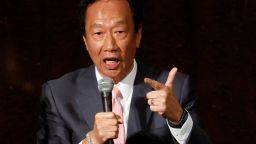Chances are, you or someone you know is getting ready to shop on Black Friday. The informal kickoff to the Christmas shopping season has morphed into a spectacle that helps retailers lure shoppers to their stores, sometimes as early as dawn, to get deals.
About 131 million people are expected to shop Black Friday in person and online, a slight increase over last year, according to the National Retail Federation. It’s the most popular day to shop over the weekend of sales, which stretches from Thanksgiving Thursday to Cyber Monday.
Even as the holiday shopping season lengthens, and some buyers choose to wait on the sidelines for discounts, Black Friday is still a crucial shopping day in the US – a bellwether of the retail industry’s resilience. But despite the name, it has nothing to do with red or black ink on a merchant’s balance sheet.
Rather, Black Friday actually started in the 1950s in… Philadelphia?
Hordes of shoppers from the suburbs descended on the city for the days after Thanksgiving, according to Bonnie Taylor-Blake, a researcher at the University of North Carolina. The city promoted big sales and decorations ahead of the annual Army vs. Navy football game, which took place on Saturday.
“It was a double whammy,” Taylor-Blake previously told CNN. “Traffic cops were required to work 12-hour shifts, no one could take off and people would flood the sidewalks, parking lots and streets. The cops had to deal with it all and coined the term.”
City merchants also started to use the term to describe the long lines and shopping mayhem at their stores. “It became this comical reference to downtown Philadelphia following Thanksgiving,” she said.
In 1961, the idea of rebranding the holiday to “Big Friday” was floated so that one of the biggest days in shopping wouldn’t carry a negative connotation. But that didn’t catch on.
Over time, retailers learned to embrace the name and even expanded the one-day shopping event.
Around 2003, retailers upped the stakes by adjusting store opening times. That year, Kmart, Walmart and Sears offered pre-dawn sales beginning as early as 5 am. That was the same year Black Friday became the most profitable shopping day of the year, according to the International Council of Shopping Centers. Prior to 2003, the most profitable shopping days in America came late in December.


In 2011, Walmart extended the holiday again when it opened it stores at 10 pm on the night of Thanksgiving and stayed open through Black Friday. (However, in recent years big box stores have reversed that decision and are closed on Thanksgiving.)
With the rise of the internet, another shopping holiday was born in 2005: Cyber Monday. It was a marketing term coined by the NRF for online retailers to mirror the shopping craze felt by brick-and-mortar stores on Black Friday.

Last year, Adobe Analytics said Black Friday sales online racked up a a record-breaking $9.12 billion, with electronics, smart home equipment, toys and exercise equipment being the top items.
This year, Adobe expects online sales to climb by 5.7% year over year to $9.6 billion, despite economic headwinds such as inflation, higher borrowing costs, and the resumption of student loan repayments.
“Despite an unpredictable economic environment, where consumers face several challenges including rising interest rates, we expect strong e-commerce growth this season on account of record discounts and flexible payment methods,” said Patrick Brown, vice president of growth marketing at Adobe, in a release.






